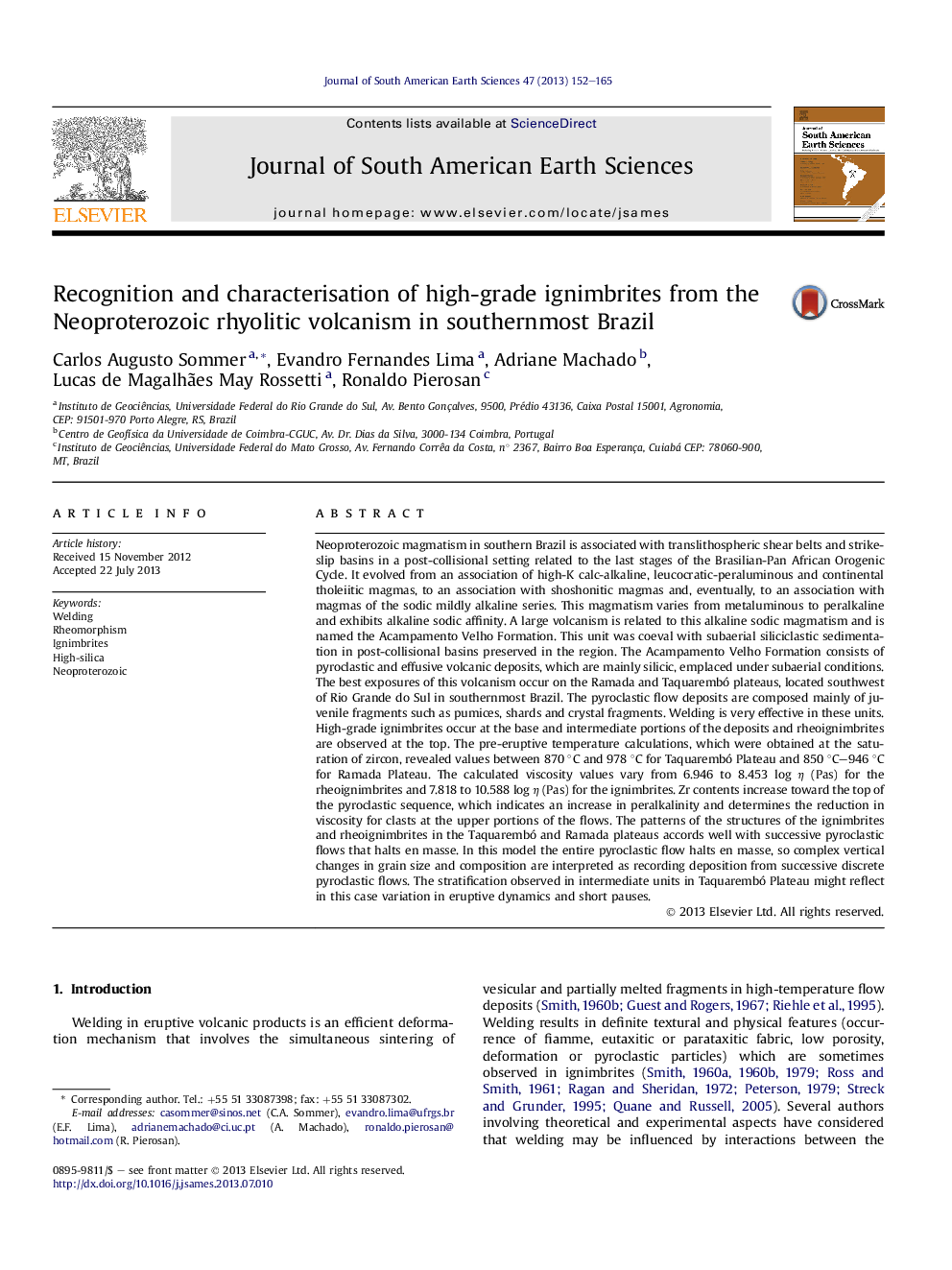| کد مقاله | کد نشریه | سال انتشار | مقاله انگلیسی | نسخه تمام متن |
|---|---|---|---|---|
| 6431442 | 1635162 | 2013 | 14 صفحه PDF | دانلود رایگان |
- High-grade ignimbrites occur in a Neoproterozoic sequence in Southernmost Brazil.
- They are associated to a high-silica Na-alkaline magmatism.
- Rheomorphic deposits occur in the upper portion of the pyroclastic sequence.
- The pre-eruptive temperature obtained shows values between 850 and 978 °C.
- The high grade of the welding and the rheomorphism are sin-depositional process.
Neoproterozoic magmatism in southern Brazil is associated with translithospheric shear belts and strike-slip basins in a post-collisional setting related to the last stages of the Brasilian-Pan African Orogenic Cycle. It evolved from an association of high-K calc-alkaline, leucocratic-peraluminous and continental tholeiitic magmas, to an association with shoshonitic magmas and, eventually, to an association with magmas of the sodic mildly alkaline series. This magmatism varies from metaluminous to peralkaline and exhibits alkaline sodic affinity. A large volcanism is related to this alkaline sodic magmatism and is named the Acampamento Velho Formation. This unit was coeval with subaerial siliciclastic sedimentation in post-collisional basins preserved in the region. The Acampamento Velho Formation consists of pyroclastic and effusive volcanic deposits, which are mainly silicic, emplaced under subaerial conditions. The best exposures of this volcanism occur on the Ramada and Taquarembó plateaus, located southwest of Rio Grande do Sul in southernmost Brazil. The pyroclastic flow deposits are composed mainly of juvenile fragments such as pumices, shards and crystal fragments. Welding is very effective in these units. High-grade ignimbrites occur at the base and intermediate portions of the deposits and rheoignimbrites are observed at the top. The pre-eruptive temperature calculations, which were obtained at the saturation of zircon, revealed values between 870 °C and 978 °C for Taquarembó Plateau and 850 °C-946 °C for Ramada Plateau. The calculated viscosity values vary from 6.946 to 8.453 log η (Pas) for the rheoignimbrites and 7.818 to 10.588 log η (Pas) for the ignimbrites. Zr contents increase toward the top of the pyroclastic sequence, which indicates an increase in peralkalinity and determines the reduction in viscosity for clasts at the upper portions of the flows. The patterns of the structures of the ignimbrites and rheoignimbrites in the Taquarembó and Ramada plateaus accords well with successive pyroclastic flows that halts en masse. In this model the entire pyroclastic flow halts en masse, so complex vertical changes in grain size and composition are interpreted as recording deposition from successive discrete pyroclastic flows. The stratification observed in intermediate units in Taquarembó Plateau might reflect in this case variation in eruptive dynamics and short pauses.
Journal: Journal of South American Earth Sciences - Volume 47, November 2013, Pages 152-165
